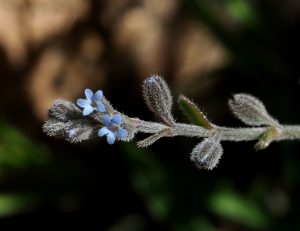
Rochelia
Basic Information Common Name: Rochelia Scientific Name: Rochelia Native Habitat: Central Asia, specifically regions within Kazakhstan, Uzbekistan, and surrounding areas. History / Discovery / Cultivator
Common Name: Rochelia
Scientific Name: Rochelia
Native Habitat: Central Asia, specifically regions within Kazakhstan, Uzbekistan, and surrounding areas.
The genus Rochelia belongs to the Boraginaceae family, commonly known as the borage or forget-me-not family. Plants in this genus are primarily found in the temperate and subtropical regions of the world, with a significant presence in Central Asia. The exact history of the discovery and classification of Rochelia is somewhat diffuse, as botanical exploration in Central Asia has been ongoing for centuries. However, the naming and classification of species within the genus owe much to the systematic work of botanists during the 19th and 20th centuries.
Several botanists have contributed to the understanding of Rochelia. Early botanical explorers in the region, often associated with scientific expeditions commissioned by European powers, collected plant specimens. These specimens were then sent back to herbaria for identification and classification. Notable botanists who likely contributed to the knowledge of Rochelia (although not always directly) include those who studied the broader flora of Central Asia. The work of Russian botanists is particularly relevant, given Russia’s historical influence and extensive botanical surveys in the area. Specific names often associated with Boraginaceae studies in general include those who focused on taxonomic revisions and phylogenetic relationships within the family.
Rochelia plants are not typically cultivated on a large scale in the same way as agricultural crops or ornamental plants. Their primary significance lies in their ecological role within their native ecosystems. Some species might be collected by enthusiasts of alpine or rock garden plants, given their often low-growing, drought-tolerant nature. However, comprehensive information about specific cultivators or popularizers of Rochelia is limited. This could be due to their relative obscurity compared to more widely cultivated plants. If any Rochelia species gains traction in horticulture, it’s often due to its aesthetic qualities, such as its delicate flowers or unusual foliage.
The geographical origins of Rochelia are firmly rooted in Central Asia. The arid and semi-arid environments of this region have shaped the evolutionary adaptations of these plants. They are well-suited to surviving in harsh conditions, including drought, extreme temperatures, and poor soil. The specific species within Rochelia are distributed across different parts of Central Asia, with some being endemic to particular mountain ranges or valleys. Understanding the geographical distribution of these plants is crucial for conservation efforts, as habitat loss and climate change pose threats to many plant species in the region. Further research is needed to fully document the diversity and distribution of Rochelia and to assess the conservation status of its various species.
| Category | General Requirement | Notes |
|---|---|---|
| Light | Full sun | Requires ample sunlight for optimal growth and flowering. |
| Water | Low | Drought-tolerant; allow soil to dry out between waterings. |
| Humidity | Low | Tolerant of dry air; does not require high humidity. |
| Temp. Range | Moderate | Tolerates a wide range of temperatures, but avoid extreme frost. |
| Soil Type | Well-draining | Prefers sandy or gravelly soil with good drainage to prevent root rot. |
| Fertilizer | Low | Minimal fertilization needed; avoid over-fertilizing. |
| Toxicity | Unknown | Toxicity information is currently unavailable. Exercise caution. |
Rochelia species exhibit several adaptations to thrive in their harsh native environments. Many species are low-growing, forming compact rosettes or mats. This helps them conserve moisture and protect themselves from strong winds. Their leaves are often small and hairy, reducing water loss through transpiration. The roots are typically deep and extensive, allowing them to access water deep in the soil. Some species also have the ability to tolerate high levels of alkalinity in the soil, a common feature of arid regions. Their drought tolerance is perhaps their most crucial adaptation, allowing them to survive long periods without rainfall. The flowers, while small, are often brightly colored to attract pollinators in an environment where pollinators may be scarce.
Rochelia can be propagated through several methods:
Due to the limited available information, the toxicology of Rochelia is largely unknown. It’s advised to exercise caution and prevent ingestion by humans and pets. If ingestion occurs, monitoring for any adverse reactions is crucial, and contacting a medical professional or veterinarian is recommended.
Rochelia is typically considered rare due to its limited geographical distribution in specific regions of Central Asia. Its specialized adaptations to harsh environments make it less adaptable to widespread cultivation. The difficulty in propagation and slow growth rate also contribute to its rarity in cultivation.
The value of Rochelia, if available for sale, is influenced by several factors. The size of the plant, its overall health and vigor, and its provenance can all affect its price. Given its rarity, established specimens would likely command a higher price. Collector interest in unique and unusual plants would further drive the value. The availability of propagation techniques and seeds from trusted sources will further influence pricing, as lower supply means higher pricing.

Basic Information Common Name: Rochelia Scientific Name: Rochelia Native Habitat: Central Asia, specifically regions within Kazakhstan, Uzbekistan, and surrounding areas. History / Discovery / Cultivator
